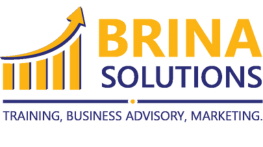
Upskilling your team is a strategic way to improve productivity, adapt to industry changes, and boost employee satisfaction. By investing in learning and development, you not only enhance skills but also future-proof your business. Here’s how to upskill your team effectively:
1. Assess Current Skill Gaps
Start by identifying the skills your team lacks to meet current or future business demands. Conduct a thorough skills assessment, either through surveys, performance reviews, or analytics. Understanding these gaps helps you prioritize the most critical areas for development.
Example Questions for Assessment:
- What tasks or goals are consistently challenging for the team?
- What new technologies or tools does the team need to master?
- What future trends are likely to affect your industry?
Tip: Use tools like competency matrices or training needs analysis software to gain deeper insights.
2. Align Upskilling with Business Goals
Ensure that your upskilling efforts align with your company’s strategic goals. For example, if digital transformation is a priority, focus on technical training like coding, data analytics, or project management tools. Clear alignment ensures that training investments directly contribute to business outcomes.
Example: If your business aims to improve customer experience, prioritize upskilling in customer relationship management (CRM) tools and soft skills like empathy and communication.
3. Explore Training Formats
Upskilling doesn’t have to be one-size-fits-all. Different employees learn in different ways, so offering a variety of training formats can increase engagement and effectiveness.
Common Training Formats:
- Workshops and Seminars: Ideal for collaborative learning and in-depth exploration.
- Online Courses: Flexible, self-paced learning for employees with varying schedules.
- On-the-Job Training: Immediate application of new skills in real-time tasks.
- Coaching and Mentorship: Personalized guidance from experienced team members.
Tip: Combine formal and informal training approaches to cater to different learning styles.
4. Leverage Technology for Learning
Modern learning management systems (LMS) and e-learning platforms make it easy to upskill your team. These tools offer scalable, cost-effective solutions with access to global expertise.
Popular Learning Platforms:
- LinkedIn Learning: For courses in leadership, technology, and professional development.
- Coursera: Offers university-level courses on topics like AI, marketing, and business.
- Udemy for Business: Customizable training programs tailored to your team’s needs.
Tip: Gamify training with quizzes and certifications to keep employees motivated.
5. Encourage a Culture of Continuous Learning
Upskilling should be an ongoing effort, not a one-time initiative. Encourage a culture where learning is valued and rewarded. Regularly highlight the benefits of upskilling and celebrate employee achievements to foster enthusiasm.
Ways to Promote Continuous Learning:
- Offer incentives like bonuses or promotions for completing training programs.
- Create a knowledge-sharing platform where employees can share insights and resources.
- Schedule monthly “learning days” for employees to focus on skill development.
Example: Companies like Google and Microsoft offer employees dedicated time each week for professional development.
6. Measure and Track Progress
To ensure your upskilling efforts are effective, regularly measure their impact on employee performance and business outcomes. Use metrics like productivity levels, project success rates, or employee retention as benchmarks for success.
Key Performance Indicators (KPIs) to Monitor:
- Training Completion Rates: Measure how many employees finish courses or certifications.
- Skill Application: Track improvements in task performance after training.
- Employee Satisfaction: Use surveys to gauge how employees perceive the value of upskilling initiatives.
Tip: Regularly review training programs to identify areas for improvement and adapt them to evolving business needs.
7. Tailor Training to Individual Career Paths
Upskilling should align with both company goals and individual employee aspirations. Offering personalized training plans can boost motivation and loyalty, as employees see opportunities for career advancement.
Strategies for Individual Development:
- Conduct one-on-one meetings to understand employee goals.
- Create customized learning paths based on individual strengths and aspirations.
- Offer leadership training to high-potential employees for succession planning.
Example: An employee interested in data analysis could be enrolled in an advanced Excel or Tableau course to complement their role.
8. Partner with External Experts
Sometimes, external trainers or industry experts can provide specialized knowledge and fresh perspectives. Partnering with a training provider can ensure your team gets high-quality, up-to-date insights.
Benefits of External Expertise:
- Access to industry-specific knowledge.
- Exposure to global best practices.
- Professional certifications that boost credibility.
Tip: Consider workshops or training programs by recognized organizations to enhance your team’s credentials.
9. Address Soft Skills and Leadership Development
While technical skills are essential, don’t overlook the importance of soft skills like communication, teamwork, and leadership. These skills enhance collaboration and prepare employees for managerial roles.
Key Soft Skills to Develop:
- Emotional Intelligence (EQ)
- Time Management
- Conflict Resolution
- Decision-Making
Example: Leadership programs for mid-level managers can prepare them for executive roles, ensuring smooth succession planning.
10. Foster Knowledge Sharing Within Teams
Encourage employees who complete training to share their knowledge with the team. This not only reinforces their learning but also spreads expertise across the organization.
Knowledge Sharing Methods:
- Lunch-and-Learn Sessions: Informal presentations during breaks.
- Team Workshops: Employees teach others the skills they’ve mastered.
- Collaborative Projects: Cross-functional projects encourage team members to share insights.
Tip: Recognize and reward employees who actively contribute to team knowledge-sharing initiatives.
Conclusion: Building a Resilient Workforce Through Upskilling
Upskilling your team is more than a strategy—it’s an investment in your business’s future. By identifying skill gaps, offering tailored training, and fostering a culture of continuous learning, you can build a workforce that’s adaptable, innovative, and prepared for new challenges. In today’s fast-changing business environment, upskilling is not just an advantage—it’s a necessity.
Looking to upskill your team? Brina Solutions offers tailored training programs designed to meet your business needs. Contact us today to create a resilient, future-ready workforce.







Leave a Reply